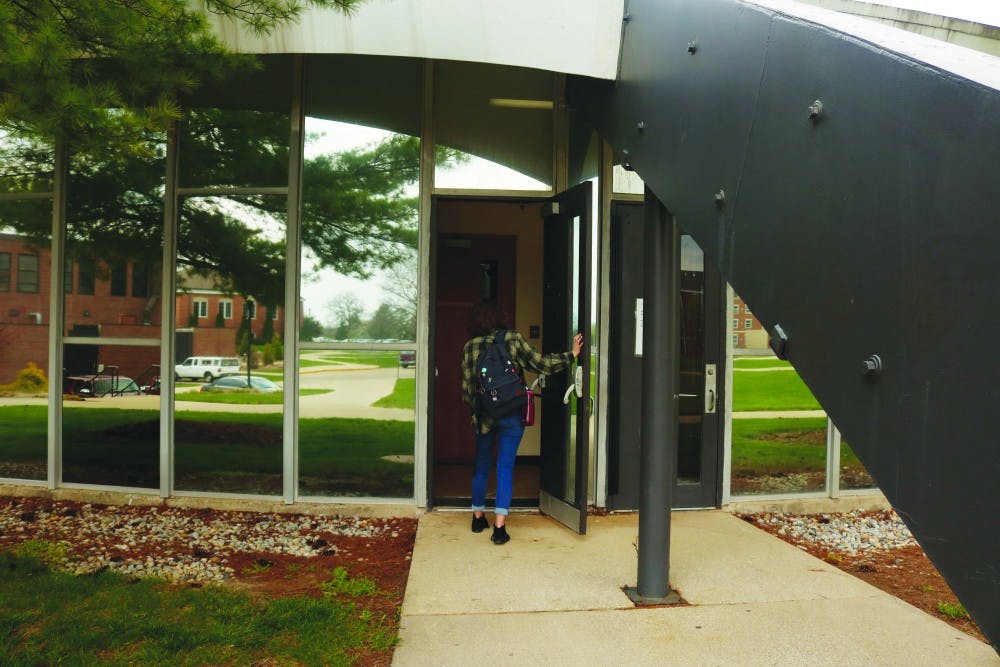By Emily Rachelle Russell | Echo
The old Student Union, now known as the Dome, will find new purpose in the near future as Taylor University's Museum of Western Art.
Deciding what to do with the Dome began about three to four years ago during President Emeritus Eugene Habecker's presidency, according to Special Assistant to the President Ron Sutherland, as plans for the LaRita Boren Campus Center took shape. The project has not been contracted yet, but Taylor is in the process of fundraising for the renovation and maintenance of the building. According to Taylor's Vice President for Finance and CFO Stephen Olson, donations will go toward structural and aesthetic building needs as well as an endowment for ongoing operations, such as utilities and cleaning.
The art will be donated from the Leland and LaRita Boren Western Art Collection, owned by Leland Boren, CEO of Avis Industrial Corporation and husband to the late LaRita Boren. The collection includes 366 paintings and 111 bronze sculptures, depicting Native Americans, bison, landscapes and cowboys in the American West.
According to Avis Industrial Corporation Vice President Marty Songer, an on-campus museum will be a great opportunity for Taylor to reach out and bridge the division that often occurs in college towns between the school and the community. It will also bring in new visitors, as people who may not travel to Indianapolis for a museum could take the exit off Interstate 69 to stop at Taylor. Songer is proud of the connection between the Borens and Taylor, as well.
"Truly, Taylor would not be what it is today without the Lord bringing (the Borens) here and their belief in Christian higher education," Songer said. "Mr. Boren has confidence, and we do, too, that they'll take care of (the art) and share it with others."
Some of the artwork to be donated was previously loaned to Taylor for an exhibit in Metcalf during the fall 2014 semester called "The Spirit of the American West." Leland Boren's interest in Native American life and the Wild West began in 1958 when he married LaRita, who was from Oklahoma, a state with a lot of Native American culture. His employees at Avis bought him his first piece, a cowboy painting titled "A Pause that Refreshes," as a gift in 1971. Since then, his collection has grown through gifts from the artists, art auctions in Western states such as Texas, Arizona and Oklahoma and purchases from Indianapolis' own Eiteljorg Museum.
Songer and Boren are excited to see an art museum developed in Grant County, which nearby communities and schools can visit. Songer points out that students from other areas are often brought to Taylor for the sciences, so she is happy to see this opportunity for art made available as well. Rex Bennett, Taylor's vice president for university advancement, agrees.
"We're hopeful that it will be a destination," Bennett said. "People will come to Upland and to Taylor's campus to see that exhibition - the exhibitions of Western art that are presented there. Tourism, raise the awareness - general awareness of the public of Taylor's presence here and what we do. We think it can only enhance that image."
The use of the Dome specifically for this project also has meaning. Though it is not an officially designated historic site, many Upland and Grant County community members find historical significance in the structure. According to Bennett, it was one of only two domes designed by the architect. Seeing the building rededicated to this new, meaningful purpose reinforces its value to people who worried, after the construction of the Campus Center, that it might be razed.
Sutherland, a Taylor alumnus ('82), remembers a time when the Dome was attached to the old Samuel Morris Hall before the hall was torn down and relocated. He recalls spending time with friends in the Dome, which they thought of as the dorm's lobby. Now, he's excited for the campus and community potential the art museum will bring.
"I think it has an opportunity to help create some momentum in the town of Upland," Sutherland said. "We may want to see art become a part of what attracts people to Main Street. . . . It starts to create this sense that Upland may be a home for the arts."
While plans for the art museum were under consideration, Bennett showed a visitor around the space. His guest pointed out the building is a vast, open space unique to its design. That spaciousness fits well with the themes of artwork depicting the open, wild American West.
Songer knows there is still a lot of work - in fundraising, renovations and planning - to be done before the museum is ready, but she looks forward to seeing the art displayed. While visitors are welcome to view the collection in its current location at the Avis Industrial building, she believes its new home will bring in a wider audience and renew people's appreciation of the work.
"Every picture, every painting tells a story," Songer said. "I look, and I can just imagine what the story might be behind that painting or sculpture."





